SpaceTravel
Latest
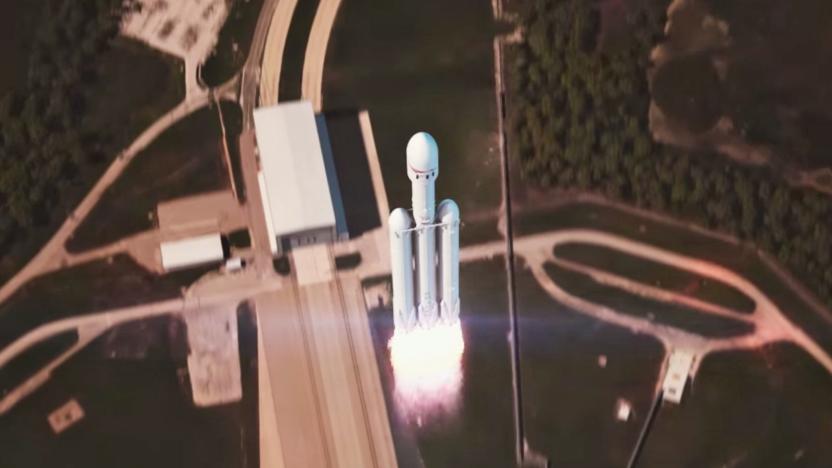
SpaceX animation shows the ideal outcome for the Falcon Heavy launch
SpaceX will attempt to launch its Falcon Heavy rocket for the first time tomorrow. It's no small feat and a lot could go wrong, but SpaceX has a released a video showing how the launch will work if everything goes according to plan.
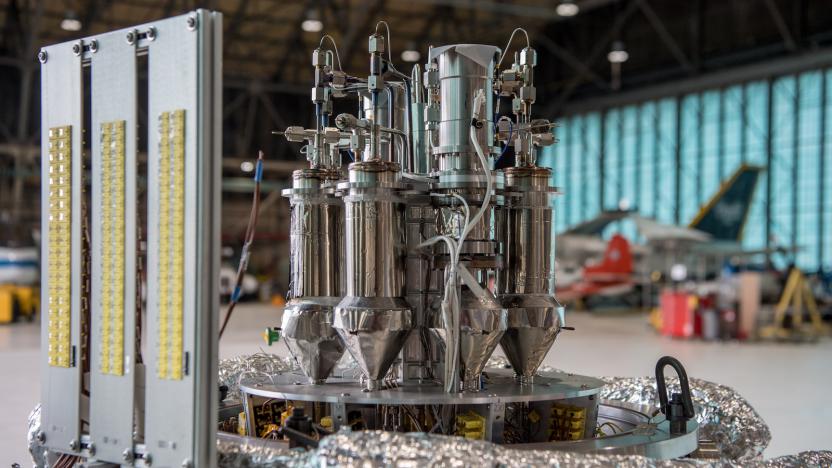
NASA tests small nuclear reactor that could power a habitat on Mars
Everyone from Elon Musk to Donald Trump wants to send a crewed mission to Mars in the not too distant future, but there are quite a few problems that need to be solved before we can achieve that goal. A major one is the issue of energy. Long-term stays on Mars, or anywhere else for that matter, will require lots of energy, as will the trip back to Earth. However, loading a rocket up with all of the necessary fuel won't work -- we would need too much. So a way to create fuel on the go is a must and researchers at NASA, Los Alamos National Laboratory and the Department of Energy announced today that they've conducted successful tests of a system that can do just that.
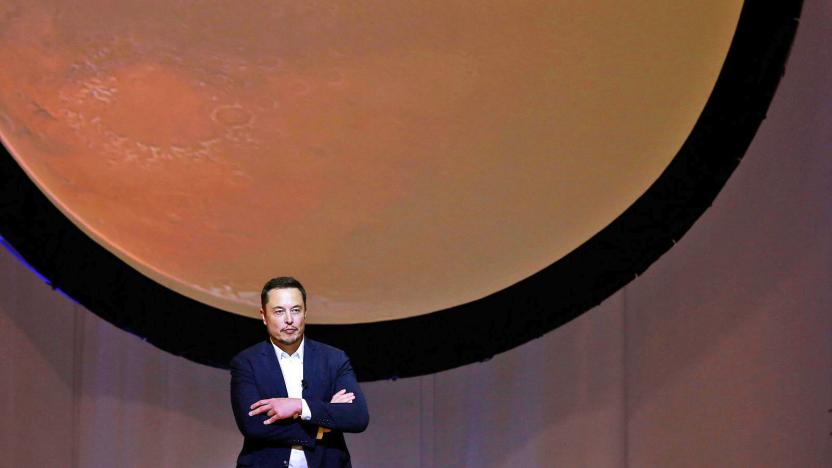
Elon Musk brings his Mars plan before the scientific community
In this month's issue of New Space, Elon Musk outlined his plan to colonize Mars. His article discusses how to bring down the cost of Mars flights as well as some of the specs of necessary equipment.

Virgin Galactic's SpaceShipTwo completes second glide flight
Two years ago, Virgin Galactic's first SpaceShipTwo tragically crashed during a test flight, killing one pilot and severely injuring the other. The company unveiled its successor back in February, the VSS Unity, which has additional safety features to prevent another crash. It completed its first glide test two weeks ago, gathering precious data about how the reusable craft behaves in the air, and just performed a second unpowered flight to round out the year.
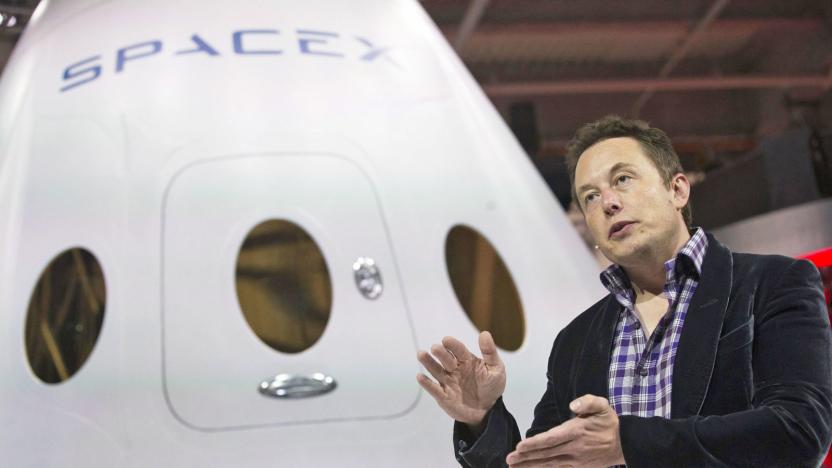
Elon Musk answers your SpaceX questions on Reddit at 6PM Eastern
SpaceX has raised more questions than it has answered as of late. Just how will it finance its plan to colonize Mars? Can it improve the reliability of its rockets? And exactly when will it reuse a rocket? You might just get some answers. Company founder Elon Musk is holding a Reddit Ask Me Anything session for SpaceX today (October 23rd) at 6PM Eastern. There's no guarantee that he'll produce any stunning revelations, but we wouldn't rule out a few surprises... or at least, answers to questions that don't usually come up at media events. Just be sure to get in your inquiries quickly, since the AMA is bound to get plenty of inquiries.

NASA wants ideas for how to survive on Mars
Have you been tossing around a practical, well researched idea that could revolutionize space travel, but just don't know how to pitch it to the folks at NASA? You're in luck -- the space administration just announced the launch of NASA iTech, a program calling for ideas from the public, government sectors, academia and the aerospace industry that could shape the future of space travel and help in a potential mission to Mars. Specifically, NASA wants 5-page white paper proposals for technologies in radiation protection, life support systems, astronaut health, in-space propulsion and high-resolution greenhouse gas measurement tools.

Chinese space theme park to send tourists to the stratosphere
Until Virgin Galactic launches, the only way to get to space as a civilian is to pay Russia a cool $20 million. If you're willing to fudge your definition of 'space' however, you may have a much cheaper option in a couple of years: A theme park under development in China is working on a high-altitude 'deep space' balloon tour that will take visitors into the lower stratosphere.

SpaceX wants two more landing pads for Falcon Heavy rocket
What's better than watching one of SapceX's Falcon 9 reusable rockets land? Watching three of them land. At the same time! Okay, that spectacle isn't here quite yet, but Elon Musk's rocket company is working on it: SpaceX recently announced that it's seeking federal approval to build two additional landing pads at Cape Canaveral -- giving it enough space to attempt a ground landing for a heavy rocket with two recoverable boosters.
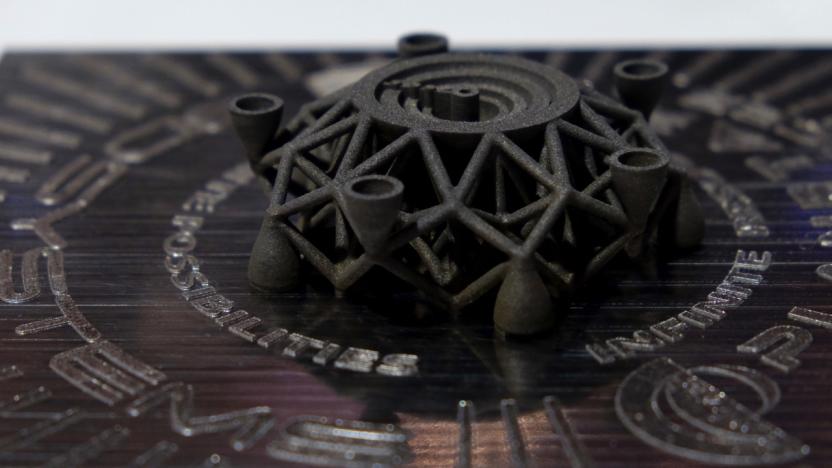
This is the first object 3D-printed from alien metal
So-called "asteroid mining" company Planetary Resources is built on the belief that asteroids and other objects in space are loaded with resources that we can take advantage of, both here on Earth and as we begin to explore space in earnest. The essentially infinite supply of rocks floating through space, filled with valuable minerals that we'll eventually run out of on our home planet, sounds like a great resource to take advantage of. But the idea of mining, processing and building with alien metals also sounds like a massive and daunting undertaking.

ICYMI: Drawing in VR, new space plane and more
#fivemin-widget-blogsmith-image-30134{display:none;} .cke_show_borders #fivemin-widget-blogsmith-image-30134, #postcontentcontainer #fivemin-widget-blogsmith-image-30134{width:570px;display:block;} try{document.getElementById("fivemin-widget-blogsmith-image-30134").style.display="none";}catch(e){}Today on In Case You Missed It: SpaceX showed off the plan for its new Crew Dragon capsule to ferry astronauts between earth and the International Space Station, and it's gorgeous. A famous Disney animator is drawing in the virtual realm. And a new kind of piano has an updated, pinchable keyboard that creates all kinds of different sounds. Musicians, take note! (See what we did there?)

Watch NASA test its most powerful booster rocket ever
We know: The progress toward NASA using the SLS (or Space Launch System if you aren't into the whole brevity thing) has been painfully slow, starting way back in 2011. Today marks a significant step toward it shooting astronauts into the furthest reaches of space, however -- testing its booster system. The trial run was two minutes long (the same length as it would be during an actual launch) and in those 120 seconds, the Utah-based booster produced 3.6 million pounds of thrust. NASA says this is one of two tests necessary before the system gets cleared for a trip to Kennedy Space Center in Florida, and the next one takes place in early 2016.

Here's why people are volunteering for a one-way trip to Mars
If you've heard about the Mars One mission, you've probably had one overriding question: what the hell would prompt someone to volunteer for a one-way trip to another planet? Thanks to The Guardian, we now have a clearer answer. The news outlet has just published If I Die on Mars, a documentary that asks three Mars One finalists why they're willing to leave Earth (and everyone they know) behind. In short, they have little to lose and a lot to gain. None of the three candidates has a romantic attachment, and they all feel that they're achieving a higher purpose by settling a distant world. That common response won't be very reassuring to their families, but it does help make sense of a seemingly irrational desire for interplanetary travel.

'Interstellar' makes the case for humanity's return to space
Interstellar achieves a rare feat for a blockbuster. Like the best science fiction, it manages to tell a distinctly human story while also holding up a mirror to our societal ills. But it's also a film that isn't afraid to explore real science -- the plot largely hinges on its space-time dynamic, and it does so while plumbing the depths of human sentiment. At its core, Interstellar drives home the idea that we humans are curious creatures, and inherently explorers.

Investigating the science in Christopher Nolan's 'Interstellar'
Even the most well respected filmmakers have been known to bend the truth a bit when it comes to depicting science on the silver screen, throwing accuracy to the wind in favor of trivialities like "plot" and "drama." We kid, of course. But how does this fall's sci-fi epic Interstellar from director Christopher Nolan hold up under a microscope (no pun intended)? The folks at Popular Science have taken the Dark Knight helmsman's latest to task, exploring the feasibility of traveling through wormholes, the type of spaceship we'd need for humanity to travel 'round the stars and a few other concepts explored in the film.

NASA successfully tests microwave thruster, paving the way for speedier space travel
As with airplanes and many other self-powered machines, the fuel a shuttle engine requires can weigh nearly as much as the object it's propelling, increasing costs while significantly limiting range. It's a challenge we're going to need to overcome before launching long-distance treks through space, where carrying enough fuel may not currently be possible. One proposed method for getting future spacecrafts to their destinations is by utilizing a device called a microwave thruster. A British scientist named Roger Shawyer managed to build a similar engine called an EmDrive several years ago, and while a Chinese team also accomplished the same, the rest of the world hasn't paid much attention until NASA confirmed from its own research that such a device could work during a presentation earlier this week.

NASA says lunar caves could provide living spaces for future astronauts
It turns out that the Moon could be habitable. Sort of. NASA writes that some of the holes in our moon's surface might actually be caves where future astronauts could hole up and guard themselves from radiation, micrometeorites and massive temperature changes when day turns to night, aiding future exploration. The aeronautics outfit says that these caves could be the result of a few different actions, including sub-surface lava draining away from an area and vibrations causing the roofs of resultant voids to collapse. The only way to know for sure, though, is to physically check them out -- there's only so much that photos from NASA's Lunar Reconnaissance Orbiter can tell us. Who knows, maybe once astronauts start delving below the lunar surface they'll find a wizard or two. [Image credit: Associated Press]

Methane-powered rocket wants to conquer space on the cheap
It seems like most things come in threes: celebrity deaths, game console makers and, well, apparently privatized space-faring companies too. On that note, FireFly Space Systems (which includes former SpaceX and Virgin Galactic employees) has recently shown off its first rocket, appropriately dubbed "Alpha," and the outfit claims it's a bit different from the likes of what we've seen before. FireFly says that its vessel uses an engine that's more aerodynamic and thus more efficient than a traditional rocket's bell-shaped blasters. Another differentiator is the type of fuel is uses -- methane. This serves a few purposes. Namely, it reduces weight because the fuel itself is used to pressurize the engine as opposed to the typical helium, and it apparently simplifies design as well. Moreover, methane is relatively inexpensive; it's the same stuff used to heat houses after all. According to NewScientist, the goal is to provide a low-cost platform for launching clusters of small satellites used for, among other things, providing broadband internet.

Study: NASA can't afford a trip to Mars, but deserves the cash to do it
It's no secret that NASA's long-term goal is to get people to Mars. But how realistic is that objective, really? Unfortunately, the prospects aren't looking good right now. The National Research Council has conducted a review of NASA's space program that suggests its budget isn't practical for anything more than trips to lunar space, and might not even stretch that far. So long as the administration's finances aren't keeping up with inflation, any attempt to push past low Earth orbit would "invite failure" and "disillusionment," the Council says.

Mars One expedition whittles down its applicant pool to just over 1,000
Apparently, over 200,000 people applied for Mars One's mission to permanently leave Earth -- and while there's room to spare on the Martian plains, moving that many humans off-planet simply isn't feasible. The outfit culled that initial pool to 1,058 candidates, and emailed them to say that they'd made it past the first round of (many) cuts for the one-way mission. These remaining astronaut-hopefuls will undergo a battery of team-based training and simulations on Earth to separate the weak links, shrinking the ranks even further. When exactly those trials are going to take place hasn't been determined yet: Mars One says it needs to sort out its broadcast TV-rights first. After all, inter-planetary travel isn't cheap.

SpaceX launches new Falcon 9 rocket with 60 percent stronger engines (video)
While most of the news about SpaceX has surrounded the Grasshopper lately, the firm has been plugging away at its Falcon rocket, too. This just-launched Falcon 9 (dubbed version 1.1) boasts 60 percent more powerful engines, longer fuel tanks and according to the Global Post, other new features that were designed to boost lift capacity and "simplify operations for commercial service." To that end, the spacecraft was carrying a science and communications satellite for Canada's MDA Corp. when it left Earth's atmosphere. The take-off comes just over five years after the first Falcon's departure, and its itinerary will take it around both poles. Just remember, for a cool $56.5 million you too can send a Falcon 9 into space.








